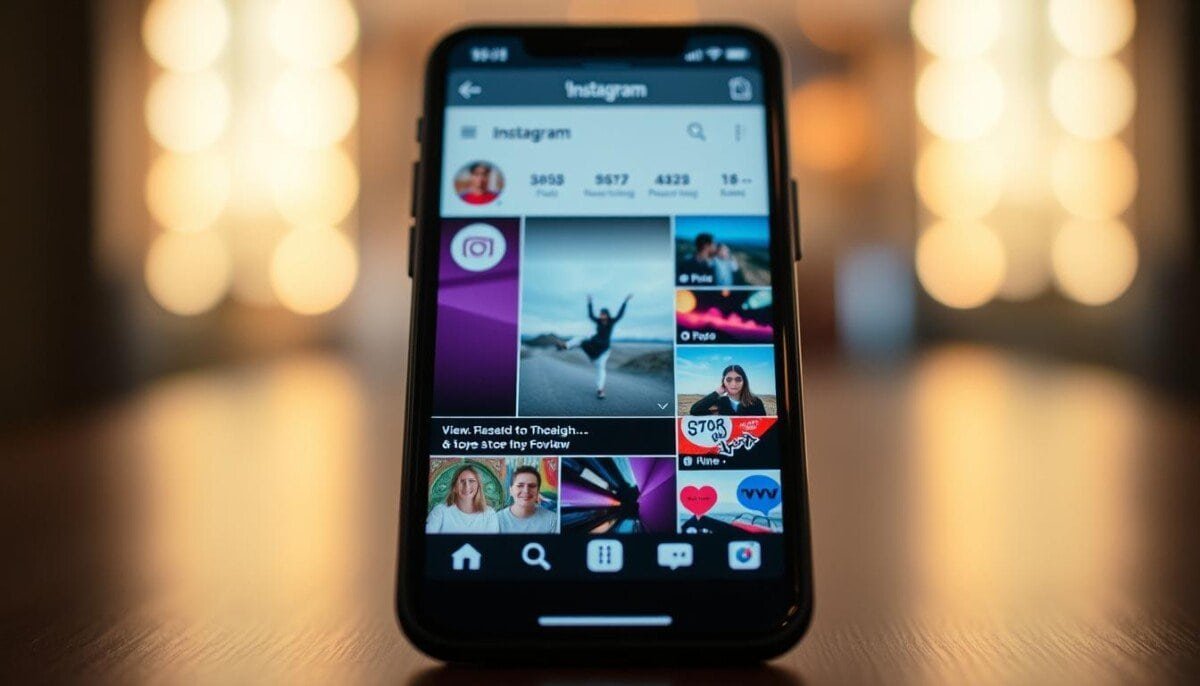Are your email newsletters not grabbing your audience’s attention? In the fast-paced world of email marketing, it’s key to stand out. We’re going to explore the art of email newsletter design, looking at tools and methods to boost your engagement. Does your current email newsletter design include eye-catching graphics and easy-to-read content? If not, it may be time to revamp your approach. In addition to focusing on email newsletter design, consider incorporating social media strategy tips to further connect with your audience and drive engagement. By integrating these tactics, you can ensure that your email newsletters are not only noticed, but also drive action.
Newsletter templates can be a big help, saving you time and making your emails look professional. Tools like HubSpot, Moosend, and EngageBay make it easy to create beautiful designs. But, your content must also be engaging.
Newsletter design is moving towards simplicity and clarity. With people spending less time on emails, every second counts. We’ll show you how to make your subject lines grab attention and use visuals to boost your open rates and clicks.
Responsive design is now essential, not optional. With more emails read on mobiles, your newsletter must look good on all screens. We’ll look at tools and tips for making your newsletter mobile-friendly and how to test it on different devices.
Key Takeaways
- Use newsletter templates to save time and ensure professional design
- Focus on simplicity and clarity to engage time-pressed readers
- Craft compelling subject lines to boost open rates
- Incorporate responsive design for mobile optimization
- Test different versions to determine the most effective approach
- Offer unique value in your newsletter content
- Leverage social media to generate excitement for your newsletters
The Power of Effective Email Newsletter Design
Email newsletters are key in today’s marketing. They can really boost engagement and make users happy. Let’s see how good design helps in email marketing.
Impact on Click-Through Rates
A good newsletter design can really help with click-through rates. It uses nice visuals and clear buttons to guide users. Personalized newsletters can even boost engagement by up to 50%.
Enhancing User Experience
Good design makes content easy to read and navigate. Single-column layouts are great for phones, making reading smooth. White space and short paragraphs help users quickly get the info.
Building Brand Consistency
Consistent design helps build brand trust and recognition. Using the same colors, logos, and images makes a series look cohesive. This consistency helps keep readers coming back and builds loyalty.
| Design Element | Recommended Practice | Impact on Brand Consistency |
|---|---|---|
| Font | Use 2-3 fonts (e.g., Arial, Helvetica) | Improves readability and brand recall |
| Header Size | 22-24pt | Draws attention to key messages |
| Body Text Size | 14-16pt | Ensures comfortable reading experience |
| Images | Custom or high-quality visuals | Reinforces brand identity and message |
| Color Palette | Match brand guidelines | Strengthens visual brand association |
By focusing on these design elements, we can make newsletters that are not only beautiful but also engaging and brand-strengthening.
Essential Elements of a Well-Designed Email Newsletter
Creating a great email newsletter takes careful thought. We’ll look at the key parts that make a newsletter pop and keep people interested.
Clear and Compelling Subject Lines
The subject line is your first chance to make an impression. It must grab attention fast, as people now focus for just 8 seconds. Write short, interesting subject lines that make people want to open your email.
Visually Appealing Headers
Headers set the mood for your newsletter. Use designs that match your brand. Since images are processed faster than text, make your headers stand out.

Engaging Visuals and Copy
Balance text and images in your newsletters. Use content from users, as 84% of shoppers check online reviews. GIFs are popular, with millions watched daily. Keep your text short and to the point to keep readers interested.
Effective Call-to-Action Buttons
Call-to-action buttons are key for getting people to act. Put them where they’re easy to see, like above the fold. Interactive content can increase open rates by 73%. Make your CTAs clear, appealing, and easy to tap on phones, as 81% of emails are opened on them.
By focusing on these key elements, you can make newsletters that grab your audience’s attention and get results. Always test different designs and check how they do to keep improving your email marketing.
Email Newsletter Design: Tools and Best Practices for Higher Engagement

Email newsletters are a big deal in marketing, with 81% of marketers using them a lot. To make great newsletters, we need the right tools and strategies. Let’s look at some tips to make your newsletters better.
Visuals are very important for newsletter engagement. Since 65% of people learn better with pictures, using cool images is key. Make sure your newsletter looks good on all devices by keeping it 600 pixels wide. Also, use 14 pixels for desktop and 16 pixels for mobile fonts to make it easy to read.
Using email design tools with templates can be a big help. They save you time and make creating newsletters easy. Many tools offer templates that you can customize with drag-and-drop editors, helping you make your newsletters look great.
| Element | Best Practice |
|---|---|
| Subject Line | Personalize for higher open rates |
| Content | Balance text and images (60% text, 40% images) |
| Call-to-Action | Clear and compelling |
| Design | Responsive for mobile optimization |
But, engagement is more than just design. Use analytics to see how well your newsletters are doing. Personalize your designs to fit what your audience likes. By using these tips and the right tools, you’ll make newsletters that really connect with your readers.
Responsive Design: Ensuring Mobile-Friendly Newsletters
Email newsletters are key for businesses to reach their audience. With more people using mobiles, making emails mobile-friendly is vital. Let’s look at why this matters and how to make emails work on any device.
Importance of Mobile Optimization
More than 60% of emails are opened on mobiles. Bad designs can hide important parts, like call-to-action buttons. Making emails mobile-friendly boosts user experience and gets more clicks.

Techniques for Responsive Design
To make mobile-friendly newsletters, use these techniques:
- Use flexible layouts with percentage-based widths
- Implement scalable images that adjust to screen size
- Choose readable font sizes (minimum 14px for body text)
- Keep content concise and easily scannable
- Design touch-friendly buttons (at least 44×44 pixels)
Testing Across Devices
Testing on different devices is key to ensure your newsletter looks good everywhere. Try it on phones, tablets, and computers. Also, test in various email clients to fix any display issues. This keeps your brand’s look and feel consistent everywhere.
| Device Type | Recommended Actions | Impact on Engagement |
|---|---|---|
| Smartphones | Optimize subject lines (30 characters), use single-column layouts | Higher open rates, improved readability |
| Tablets | Adjust image sizes, ensure touch-friendly elements | Increased interaction, longer viewing time |
| Desktops | Maintain visual hierarchy, optimize for larger screens | Better overall experience, higher click-through rates |
By focusing on mobile optimization, responsive design, and cross-device testing, we can make newsletters that work on all devices. This boosts our email marketing results.
Leveraging Email Analytics for Design Improvement
Email analytics are key to improving newsletter design. They help us see what our audience likes. We look at open rates, click-through rates, and conversion rates to understand engagement.

A/B testing is a great way to improve design. We try different things like subject lines and images. This helps us find out what works best.
Mobile optimization is very important. With 1.7 billion people checking emails on phones, our designs must be mobile-friendly. This makes our emails more engaging.
| Design Element | Impact on Performance |
|---|---|
| Subject Line | Affects open rates |
| Responsive Design | Improves mobile engagement |
| Call-to-Action Buttons | Influences click-through rates |
By always checking these metrics and making changes based on data, we make better newsletters. This leads to more people engaging with our emails.
Subscriber Segmentation: Tailoring Design to Audience Preferences
Email marketing is a strong tool for businesses to connect with customers. To stand out, we must focus on audience segmentation and targeted email design. Understanding our audience leads to more engaging newsletters.
Understanding Your Audience
Knowing our subscribers is crucial for creating compelling emails. We use data on demographics, behavior, and preferences to make detailed buyer personas. This helps us tailor our messages to meet specific customer needs.
Creating Targeted Designs
With a clear view of our audience segments, we design emails that connect. We consider location, customer lifecycle, and purchase history in our design choices. This way, we align visuals and content with what our subscribers like, boosting open rates and conversions.
Personalization Techniques
Personalization is more than just using a subscriber’s name. We use email marketing platforms with segmentation features to send customized content. This, combined with automation, helps us manage large lists while keeping a personal touch.
| Segmentation Criteria | Impact on Engagement |
|---|---|
| Demographics | Tailored messaging |
| Purchase History | Relevant product recommendations |
| Engagement Levels | Optimized send times |
By using these strategies, we make email campaigns that speak to our subscribers’ interests and needs. This targeted approach boosts user engagement and drives long-term subscriber value. It makes our email marketing more effective and rewarding.
Email Automation: Streamlining Design Processes
Email automation is changing how we design and send newsletters. It makes the process faster and more efficient. Let’s see how it can improve your email marketing.
Customizable templates are a big deal in email automation. They help make beautiful newsletters fast, keeping your brand look consistent. Even those who aren’t designers can make amazing emails with drag-and-drop editors.
Automated workflows are also important. They include:
- Welcome series for new subscribers
- Abandoned cart reminders
- Personalized content based on subscriber behavior
Platforms like Mailchimp and HubSpot have great features for email automation. They give you tools to track how well your emails do and let you test different versions.
To get the most from email automation:
- Segment your email list for better messages
- Use social media to get more email sign-ups
- Make content that people want to see
- Add fun stuff like videos or GIFs
By using these tips, you can make newsletters that really connect with your audience. The secret is to mix automation with personal touches to keep your messages meaningful.
Content Strategy: Aligning Design with Messaging
We know how important content strategy is for email newsletters. By matching design with messaging, we make newsletters that really connect with our audience. With over 4.26 billion email users worldwide, standing out is key.
Balancing Text and Visuals
Finding the right mix of text and visuals is crucial. We use eye-catching visuals to grab attention and support our brand. Also, we make sure our designs work well in Dark Mode, as many people view emails in this way.
Storytelling Through Design
Visual storytelling is a strong tool in email marketing. We use design to tell a story that leads readers through our content. By adding dynamic content, we make emails more personal and engaging. This way, our message gets across clearly.
Consistency Across Campaigns
Keeping a consistent brand is vital for trust and recognition. We use modular design systems for different content types. This saves time and keeps our campaigns looking the same.
As seen in the Litmus newsletter, this method is flexible yet keeps the brand consistent. We focus on making emails look good and work well on all devices. We also use descriptive ALT text for images, so everyone can see the content.



